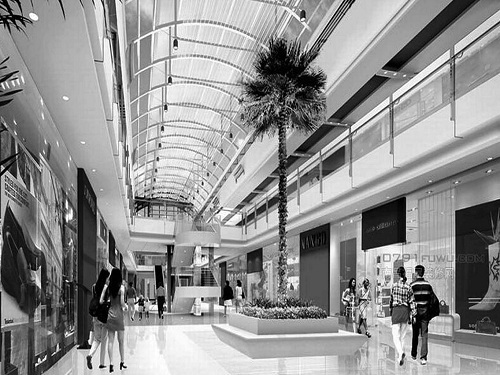
Real estate investment opened negative driving mode affected upstream and downstream industries
Over half of the loss in the building materials industry led to overcapacity in the industry. Insiders believe that overcapacity is the top priority.
According to the latest statistics from the National Bureau of Statistics, from January to October this year, investment in real estate development increased nominally by 2% year-on-year, and it has declined for 19 consecutive months. It has again become the worst investment data China has experienced since the 1998 housing reform, and two years ago, This data is also maintained at over 20% for a long time. This change has also given rise to a head start in the building materials industry, which is directly affected by its upstream and downstream industries. The rapid expansion of the industry has rapidly disappeared, and even the phenomenon of “surviving†can only survive.
source
Real estate investment for the first time in three consecutive months of negative growth
After many years of rapid development, real estate has opened up to long-term destocking, which has led to a sharp drop in new investment. This change has given devastating blows to its largest affiliate industry - the building materials industry.
According to the latest data from Bank of Communications Jinjin Center, the monthly growth rate of real estate development investment in October was -2.4%, which was a negative growth for three consecutive months after a growth rate of -1.1% in August and -3.1% in September. . In addition, the single-month increase in new housing starts in addition to the "short-lived" one-month increase in September, once again fell below zero in October, a year-on-year growth rate of -24.5%, and the cumulative growth rate was a negative growth across the board after 2014.
“Investment growth in single month has seen negative growth for three consecutive months. This is the first time since 2009.†An industry source stated that real estate is facing a long-term destocking situation. For example, Tieling’s destocking cycle has reached 8 years. It's just the beginning of a negative real estate investment.
Indeed, the latest data from the Yiju Research Institute shows that among the 50 monitored cities, more than half of the cities have a destocking cycle of more than 12 months. Among them, the Beihai destocking cycle was as high as 30.1 months, 26.4 months in Yantai, 25.5 months in Jingmen, 24.9 months in Hohhot, and 23 months in Sanya.
The main reason for the huge inventory is the disorderly development of local construction and expansion in the past ten years. However, the demand for housing is limited. According to the 2015 China Residents' Financial Capability Report survey data, the household ownership rate of Chinese households reached 83.43%, and 40.07% of households have more than two sets of real estate; of these, 52.07% of households have more than half of total household assets and 16.19% of the total household assets. The proportion of families accounts for more than 80%.
The reality of a backlog of inventory means that investment will remain difficult to recover in the short term. The real estate industry is connected with investment, and it is connected with consumption. As a result, the decline in real estate investment has caused the massive expansion of the building materials industry to fall into excess capacity in the industry.
Dilemma
Building materials trapped in excess capacity in the industry
Hengyang is a small town in Hunan, but it owns nearly a dozen cement companies and cement products companies with an annual production capacity of 16 million tons. However, with the economic slowdown and declining demand, Hengyang’s local annual demand has reached 8 million tons at full capacity, and there is a serious excess of production capacity.
The dilemma facing Hengyang Cement is just a microcosm of the building materials industry. Taking the ceramics industry as an example, the proportion of overcapacity is as high as 40%. Since 2015, 12 pottery enterprises have closed down in the Pearl River Delta region. In addition, flat glass industry, where real estate accounted for 75% of the share, also suffered large losses.
"The sharp decline in the building materials industry is not only affected by the real estate industry, but the weak real estate market is a direct factor in its decline." Industry sources said.
Ultra Plantâ„¢ Grow Light offers One Chip Technology aimed to meet your indoor growing expectation such as improve plants' quality, increase yield, or better the margin, etc., all for helping you realize a higher return on your crops.
Ultra Plantâ„¢ Grow Light is combined our advanced All-In-One technology with patented optical design and customized light full spectrum supported from our experienced LED engineers, plant specialists and other partners working on horticulture.
From Ultra Plantâ„¢ APP, you are able to schedule the growing process including photoperiod, brightness and spectral in advance. The lighting system will help you grow smarter, easier and better.
Ultra Plantâ„¢ is the most versatile horticultural grow lighting fixture for indoor plants with flexible full spectrum, brightness control and uniform, wider light distribution, suitable for top lighting of all types of crops. No matter it applies to anywhere for any crop, Ultra Plantâ„¢ can do perfect work for you.
Grow Light On Hemp,Hemp Grow Lights,Hemp Led Grow Lights,Best Grow Light On Hemp
Feton Corporation , https://www.ftplantled.com